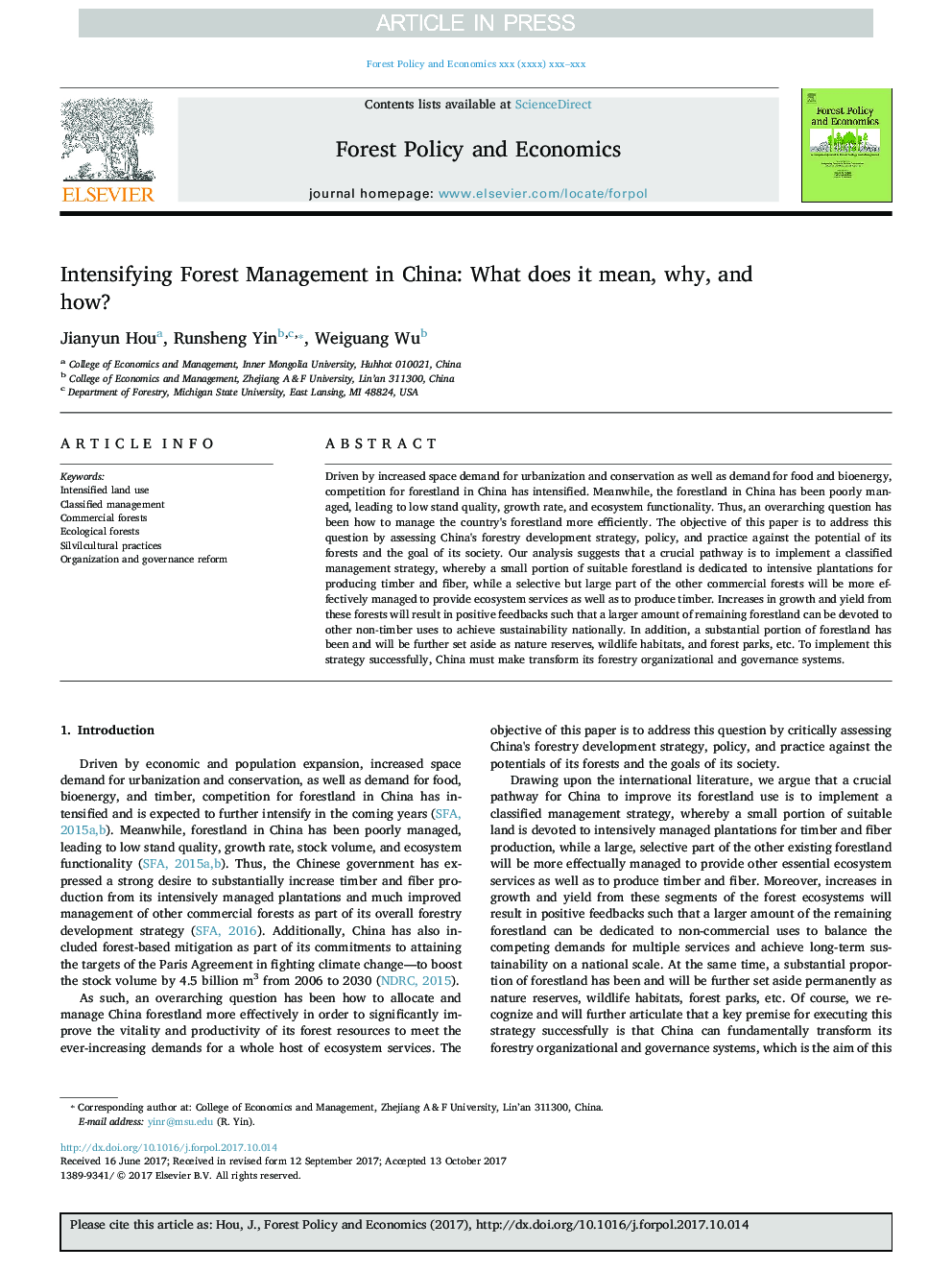| Article ID | Journal | Published Year | Pages | File Type |
|---|---|---|---|---|
| 11012830 | Forest Policy and Economics | 2019 | 8 Pages |
Abstract
Driven by increased space demand for urbanization and conservation as well as demand for food and bioenergy, competition for forestland in China has intensified. Meanwhile, the forestland in China has been poorly managed, leading to low stand quality, growth rate, and ecosystem functionality. Thus, an overarching question has been how to manage the country's forestland more efficiently. The objective of this paper is to address this question by assessing China's forestry development strategy, policy, and practice against the potential of its forests and the goal of its society. Our analysis suggests that a crucial pathway is to implement a classified management strategy, whereby a small portion of suitable forestland is dedicated to intensive plantations for producing timber and fiber, while a selective but large part of the other commercial forests will be more effectively managed to provide ecosystem services as well as to produce timber. Increases in growth and yield from these forests will result in positive feedbacks such that a larger amount of remaining forestland can be devoted to other non-timber uses to achieve sustainability nationally. In addition, a substantial portion of forestland has been and will be further set aside as nature reserves, wildlife habitats, and forest parks, etc. To implement this strategy successfully, China must make transform its forestry organizational and governance systems.
Related Topics
Life Sciences
Agricultural and Biological Sciences
Forestry
Authors
Jianyun Hou, Runsheng Yin, Weiguang Wu,
